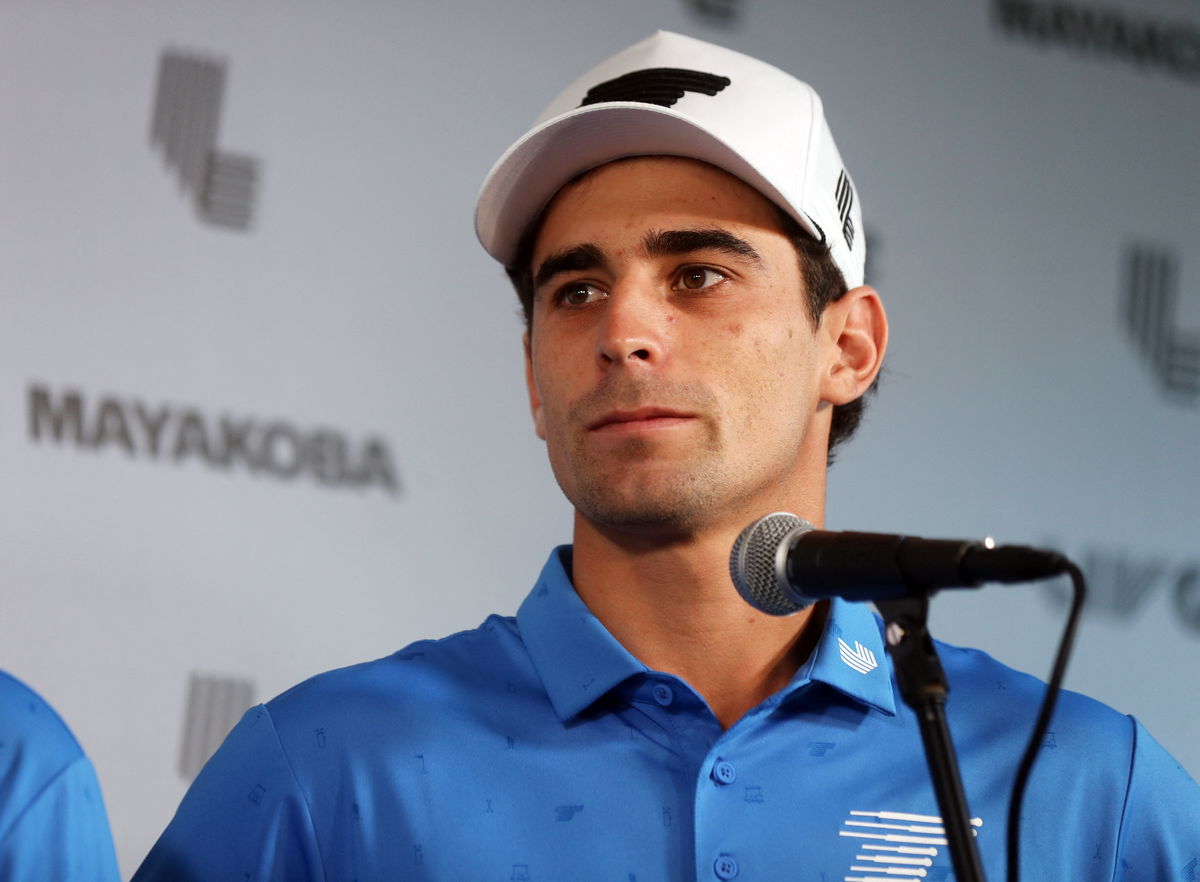
Reuters
Golf – LIV Golf Mayakoba – El Camaleon Mayakoba Golf Course, Playa del Carmen, Mexico – February 1, 2024 Torque GC’s Joaquin Niemann during the press conference REUTERS/Raquel Cunha

Reuters
Golf – LIV Golf Mayakoba – El Camaleon Mayakoba Golf Course, Playa del Carmen, Mexico – February 1, 2024 Torque GC’s Joaquin Niemann during the press conference REUTERS/Raquel Cunha
The Oakmont Country Club will officially host the 125th U.S. Open on June 12. While fans eagerly await the third men’s major of 2025 on this “weather-dependent course,” golfers are less enthusiastic. Take Rory McIlroy, for example. On the practice round on Monday, the Irishman used a 3-wood and ended up making a bogey on the par-3 8th. This is not a good sign, especially considering the changes made to the iconic course. Oakmont has undergone a complete renovation to restore its original design, including reintroducing some of its finest features from 1903 to 1946. As a result, the course, hosting the U.S. Open for the first time in nine years, has raised concerns among golfers from both the LIV Golf and PGA Tour circuits, including Keegan Bradley and Joaquín Niemann.
Watch What’s Trending Now!
At the 2025 Memorial Tournament, Keegan Bradley, who last played at Oakmont CC in 2016, said, “…it’s just going to be so brutal.” He described the course as “very straightforward,” recalling, “From what I remember, it’s hit the driver as straight as you can and try to hit every green and try to make some putts. I don’t know, there’s not much of a mystery to it.” However, this week, his claim about the course requiring “a lot, a lot, a lot, a lot of good shots“ finally found support in the LIV Golf circuit.
Joaquin Niemann, currently active in Virginia for the upcoming LIV Golf event, was the first LIV golfer to earn an exemption into the U.S. Open. Talking about his PGA Championship performance, wherein he registered his first top-10 in a major, Niemann said ahead of LIV Golf Virginia, “There’s a good challenge ahead of me in Oakmont. I can’t really tell you how I’m feeling or how I’m going to be feeling that week. I know it’s going to be a really tough week. I know U.S. Opens are always prepping the course as hard as they can. They want us to win with over par, which talks about how hard they’re going to set it up. I know it’s going to be long and rough. You’ve got to hit it long and straight.”
ADVERTISEMENT
Joaquin Niemann emphasized the importance of strategy as the event returns to Oakmont after 9 years, particularly in positioning the ball for easier uphill putts, as he anticipates “the greens will be fast, making birdies difficult.” Ultimately, he believes that winning will depend more on “minimizing bogeys and mistakes rather than making a high number of birdies.” Ahead of Keegan Bradley, LIV golfer Bubba Watson had a similar warning. Starting with “Oakmont is crazy,” Watson warned during an interview with ESPN, “Without rain. It’s going to be firm and fast, like Lynx golf, but then with high rough. Um, so yeah, they’re going to, like I said, they’re going to—we call it tricking it up.”
Eight days away. pic.twitter.com/x5t4qenXoU
— U.S. Open (@usopengolf) June 4, 2025
Take the par-4 hole 1 at Oakmont CC, for instance. During the 2016 U.S. Open, the opening hole saw a total of 161 bogeys. It had a stroke average of 4.45, making it the highest-ranked hole in the tournament. However, the changes at Oakmont CC play an important role as well. Gil Hanse and partner Jim Wagner added nearly 150 yards with new tees on holes like three and 11, bringing the championship length to 7,372 yards with a par of 70 (the uphill par-5 ninth for members will be a 472-yard par 4). The rough is currently five inches thick and has thickened due to a wet spring, with expectations for it to grow taller during the championship. The ditches and Church Pews bunker will add hazards, while the greens have been expanded by 24,000 square feet.
ADVERTISEMENT
Joaquin Niemann’s impressive driving distance of 327.3 yards (3rd) could give him an advantage at Oakmont Country Club, allowing him to reach longer holes more easily. However, his fairway hit percentage of 60.54% (T23) may present a challenge, as accuracy off the tee is crucial on this demanding course. Additionally, his greens in regulation percentage of 72.49% (4th) indicates that he can hit the greens consistently, which is essential for scoring well. If he does well, he will score a strong finish at a course iconic for more than one reason.
Top Stories
Who Is Charley Hull’s Ex-Husband? Is LPGA Star Currently Dating?

Pro Suffers Disqualification at PGA Tour Q-School After Several Players Withdrew Abruptly

Golf World Feels Sorry for PGA Tour Hopeful as Meltdown Over Q-School Stress Is Caught on Camera

Donald Trump Puts Public Golf Courses on Notice Amid Control Dispute

Brooks Koepka Takes up New Role Amid LIV Golf Exit Rumors Reaching Boiling Point

ADVERTISEMENT
Oakmont Country Club partly served as an inspiration for a golf device
Long recognized for its rapid green speeds, Oakmont Country Club significantly inspired the creation of the stimpmeter, an invention that took decades to gain acceptance in the modern game. In the years leading up to World War II, Edward Stimpson, a former Harvard golfer and the 1935 Massachusetts State Amateur champion, became concerned that the increasing speed of greens was becoming unfair to players. His theory gained traction when he learned that Gene Sarazen had putted off a green and into a bunker at Oakmont during the 1935 U.S. Open. Although Stimpson was not present at the event—his wife was six months pregnant, and he had recently experienced a “serious bank failure,” according to his son—he remained a dedicated student of the game.
Stimpson’s fascination with putting led him to create a basic wooden track designed to hold a golf ball at a consistent angle for accurate testing of green surfaces. He presented this idea to the USGA, but the governing body was slow to adopt it, only using the stimpmeter in a national championship for the first time in 1976, four years before Stimpson’s death. During its debut at the Atlanta Athletic Club, the greens measured a speed of seven on the stimpmeter, which potentially represented less than half the speed of the greens at Oakmont in 2025.
ADVERTISEMENT
ADVERTISEMENT
ADVERTISEMENT

